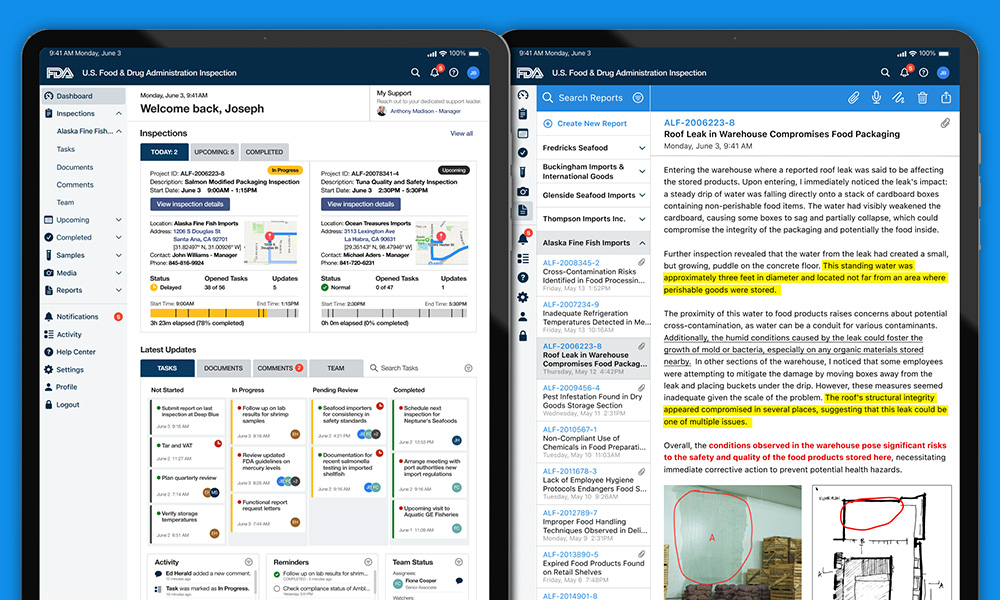
FDA - Imported Food Field Inspection App
This project modernized the FDA’s food inspection process with a user-friendly mobile solution, replacing outdated tools and optimizing workflows to improve efficiency and accuracy.
Client: FDA – US Food & Drug Administration
Industry: Government
Platforms: Tablet App, iOS Native
Role: Lead Product Designer & Manager
Design Team: Myself, UX Designer, UX Researcher
Client Team: Stakeholder, SME, Engineering Lead & Engineering Team
Time Frame: 6 Months
**View the final designs and project outcomes by scrolling to the bottom of the screen.
Before & After
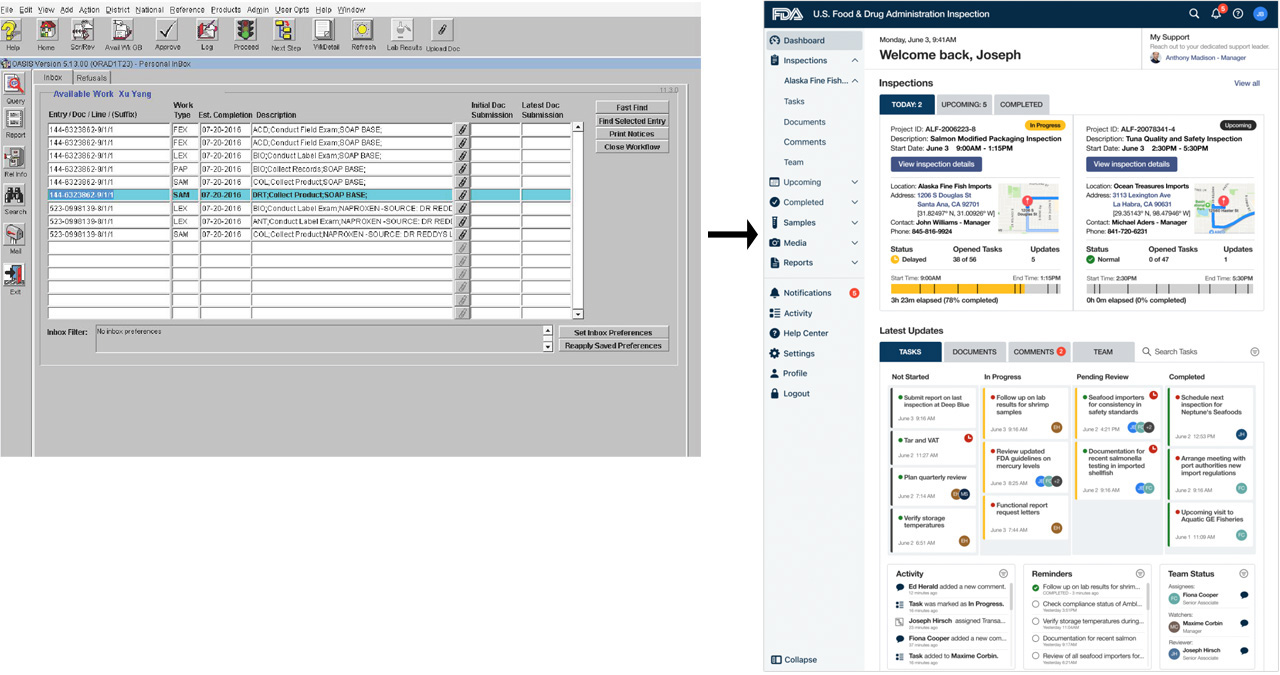
Context
FDA imported food inspectors protect public health by ensuring imported food meets U.S. safety standards and complies with regulations to prevent risks to consumers.
- Maintain Compliance Oversight: Inspectors ensure that food importers follow regulations by overseeing operations, reviewing safety procedures, and identify violations.
- Document Observations and Violations: Inspectors are responsible for collecting critical data by documenting observations, and recording violations to uphold safety standards during their inspections.
- Conduct On-Site Inspections: They conduct physical inspections on-site at multiple locations, reviewing operations and facilities to verify alignment with regulations.
Problem

Field Inspectors Impact:
- Inspection Workflows: Inefficient workflows slow inspectors down, causing delays and inaccuracies, and require improvements to enable faster, more precise reporting.
- Documentation Process: A cumbersome documentation process creates challenges for inspectors, reducing accuracy and usability, and highlights the need for simplification.
- Inspection Equipment: Inspectors rely on a wide array of tools—including laptops, cameras, cell phones, binders, and flashlights—to document findings and capture evidence. Outdated software and fragmented workflows add complexity, leading to inefficiencies, delays, and errors.
- Tight Schedules & Back-to-Back Inspections: Inspectors face daily challenges managing tight schedules and consecutive inspections. The lack of effective scheduling and navigation tools makes it difficult to plan and complete inspections efficiently.
Business Impact:
- Environmental Challenges: Varying inspection site sizes and limited wireless connectivity disrupt operations and require adaptable solutions to maintain seamless functionality.
- Operational Inefficiencies: Fragmented tools and outdated processes cause delays and errors, reducing the organization’s overall productivity.
- Cost Implications: Inefficient workflows and excessive reliance on paper-based systems increase operational costs.
- Compliance Risks: Delays and errors in reporting undermine adherence to regulatory standards, posing risks to public safety.
Objective
-
Streamline Inspection Workflows: Optimize processes to minimize delays and ensure faster, more efficient task completion.
-
Simplify the Documentation Process: Improve usability to make documenting and recording inspection details more accurate and user-friendly.
-
Design a Mobile Solution: Replace outdated tools and fragmented workflows with a single portable device to improve inspector efficiency.
-
Maintain Seamless Operations: Ensure uninterrupted connectivity by addressing site size and wireless connectivity challenges.
-
Optimize Rigorous Schedules: Provide scheduling and navigation tools to help inspectors effectively manage single or consecutive inspections in a day.
UX Process:
Empathize
Tasks:
Reviewed Stakeholder requirements
Educated on inspection training and FDA operating procedures
Created a Problems & Challenges Matrix
Conducted interviews with Inspectors and Stakeholders
Shadowed field inspections with inspectors
Performed product evaluation of current inspection software
Stakeholder Requirements
Key Findings:
- Enhanced Workflow Efficiency: Stakeholders emphasized the need to optimize inspection processes to minimize delays, reduce errors, and improve overall productivity.
- Improved Data Accuracy and Reporting: Reliable and precise documentation is critical to ensuring compliance and maintaining regulatory standards.
- Adaptability to Operational Challenges: Solutions must address varying inspection site conditions, including limited connectivity and diverse operational environments, to ensure seamless functionality.
- User-Centered Technology Solutions: Stakeholders highlighted the importance of modern, integrated tools to replace fragmented and outdated equipment, enhancing usability and inspector satisfaction.
Problems & Challenges Matrix
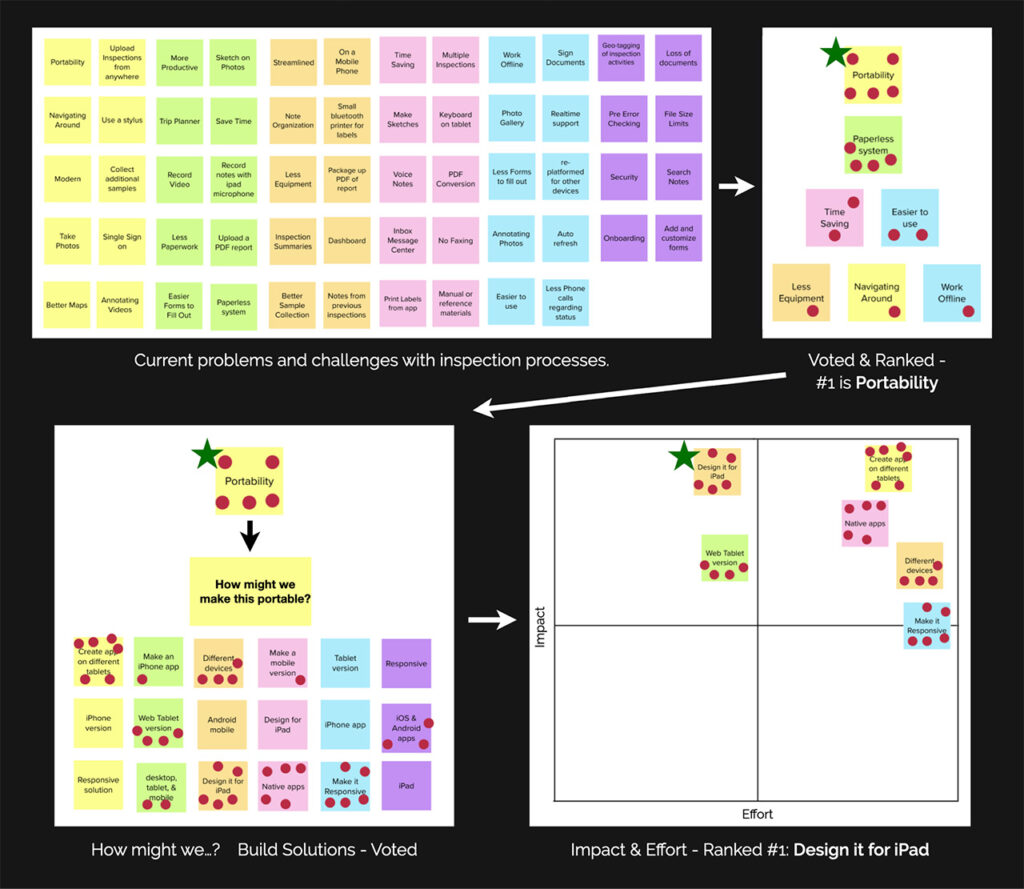
Interviews & Shadowed Claims Adjusters
Claims Adjusters:
- Difficulties in filling out forms, retrieving information, and operating offline because of inconsistent connectivity.
- They are required to carry a large amount of equipment for every inspection.
- Extended working hours due to frequent phone calls with the back office and inspection report submission delays.
Stakeholders:
- Improve Inspector productivity by maintaining their focus and efficiency during inspections.
- Encourage Managers to take more responsibility during and after inspections.
- Simplify the process of accessing information, internal communicating and better technology for Inspectors.
If we had a better system for logging inspections on-site, it would save so much time and allow me to focus on food safety instead of being bogged down by paperwork.
Taylor Verona - Senior Inspector
Product Evaluation
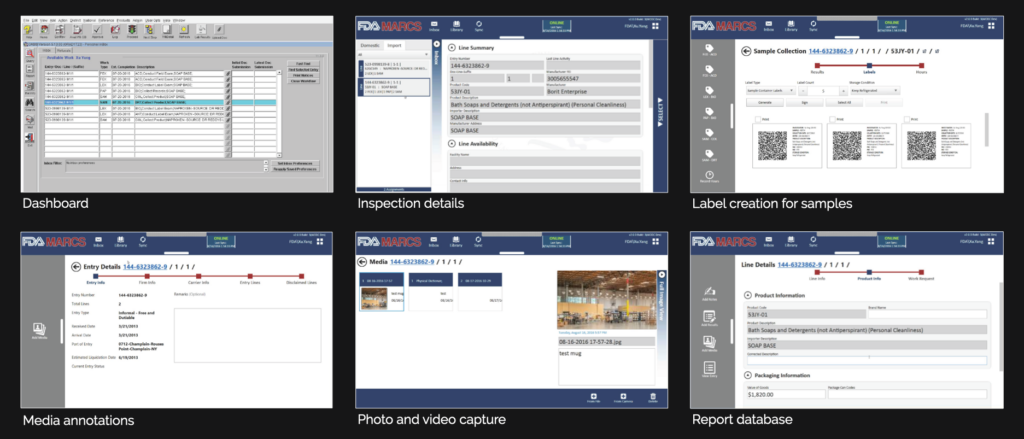
Shadowed Inspectors during field inspections
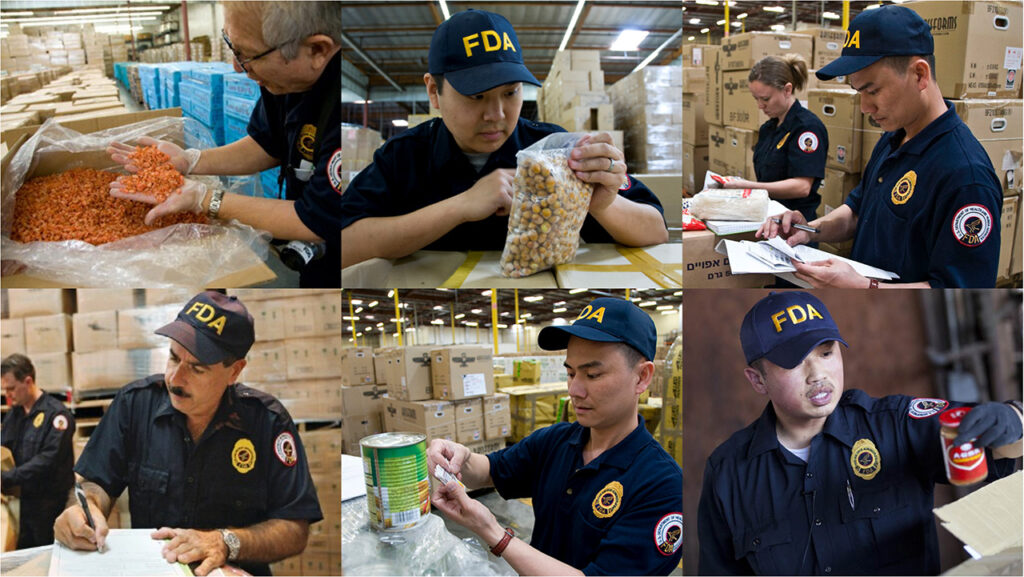
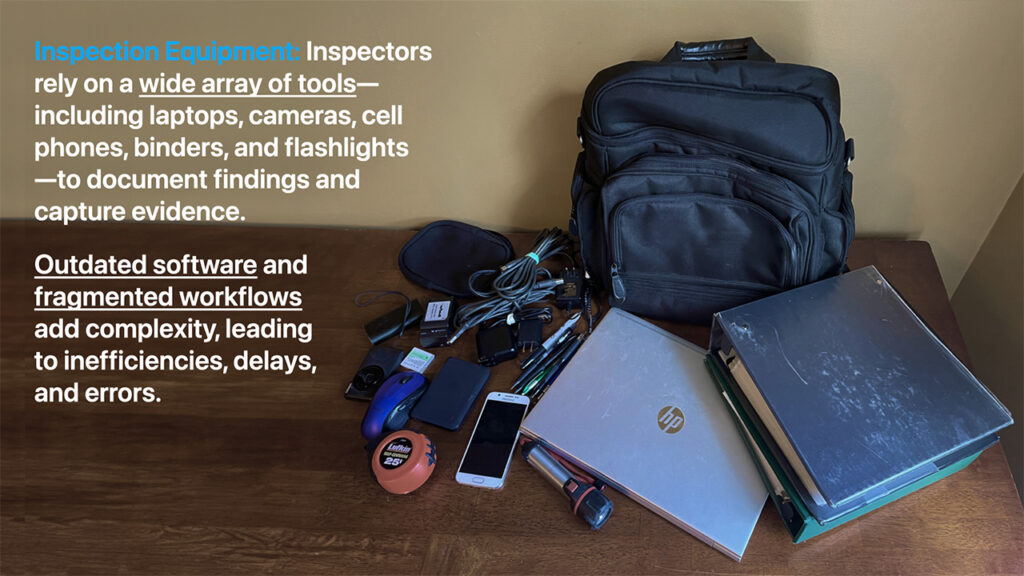
Conceptualize
Tasks:
Developed User Personas
Created Journey Map
Conducted Foundational & Exploratory Research
User Personas

Key Findings:
- Technology Limitations: Inspectors are hindered by outdated software, slow system performance, and connectivity challenges.
- Inefficient Workflows: Excessive manual paperwork and cumbersome processes increase workloads and delay tasks.
- Communication Barriers: Ineffective communication tools create challenges in collaboration and information sharing.
- Financial Strain: Inspectors often cover personal costs for essential work equipment.
- Drive for Improvement: Despite frustrations, inspectors are committed to their roles and strongly advocate for modernized systems to improve team performance and streamline processes.
Journey Map

Key Findings:
- Inefficient Processes: Inspectors face delays and challenges due to outdated tools, fragmented workflows, and cumbersome procedures.
- Need for Simplified Documentation: Streamlining and simplifying documentation processes would improve accuracy and reduce frustration.
- Technology Gaps: Better systems and updated technology are critical to improving efficiency, accuracy, and communication in inspections.
- Improved Communication: Clearer communication between inspectors, teams, and FDA headquarters would enhance coordination and ensure smoother operations.
Foundational & Exploratory Research
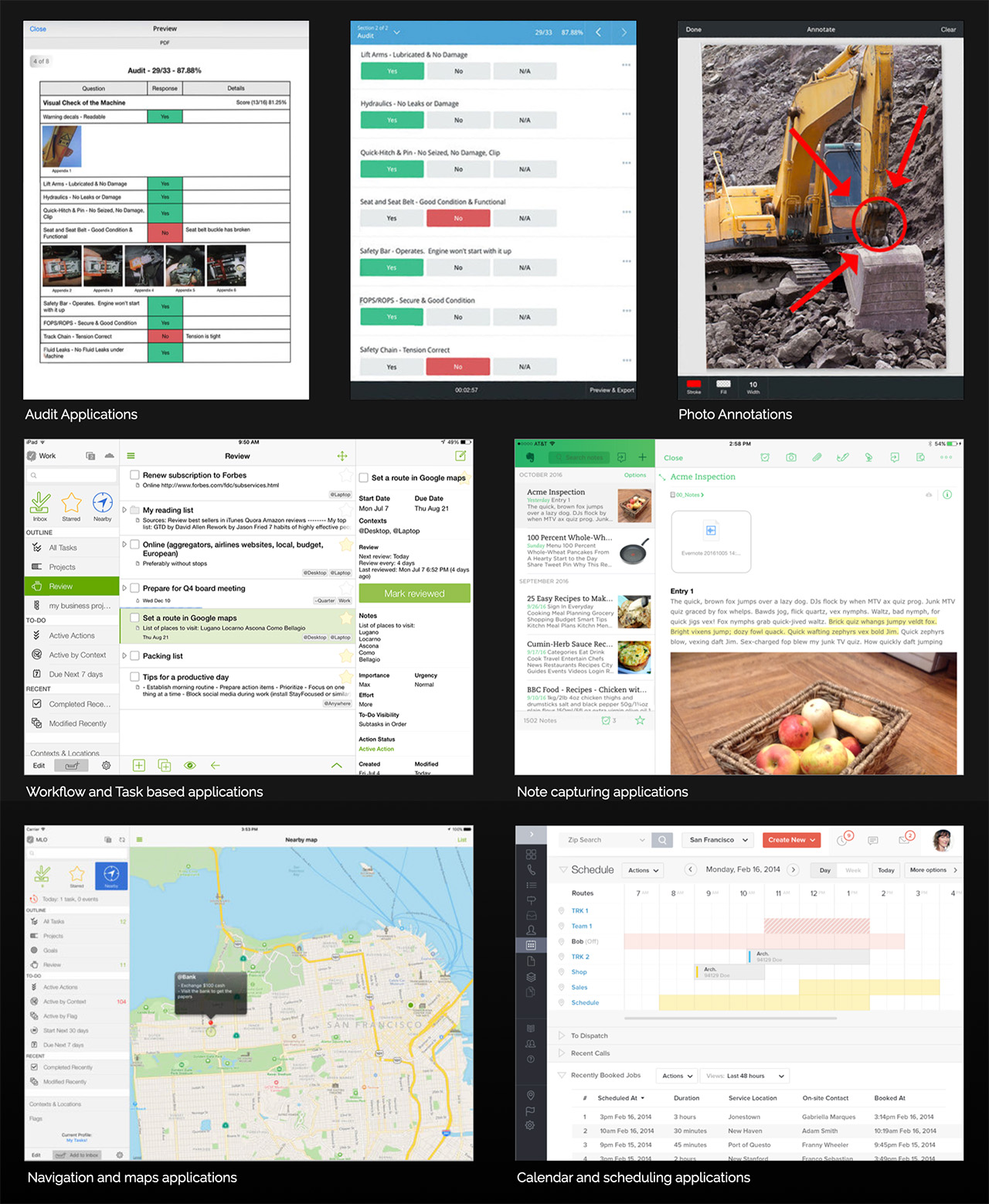
Design
Tasks:
Developed Prototype
Conducted User Testing
Built High-Fidelity Designs
Created Design System
Prototype & User Testing
Key Findings:
These were new and updated features introduced into the prototype and tested with inspectors during user testing to evaluate the usability and effectiveness of the prototype.
-
Introduced Touchscreen: Provided smooth and easy task interactions on a tablet, transitioning from the previous laptop-based system
-
Intuitive Interface: Provided a more user-friendly and seamless experience
-
Effortless Global Navigation: Simplified movement throughout the app
-
Optimized Forms: Streamlined for quick and easy completion
-
Searchable Content: Allowed easy access to critical information
-
New Integrated Camera: Captured photos and videos directly within the app
-
Enhanced GPS: Improved navigation and trip planning capabilities
-
Flexible Handwriting: Supported seamless note-taking with a stylus
-
Hands-Free Voice-to-Text: Enabled efficient and convenient note-taking
Project Outcomes
Key performance indicators (KPIs) are based on 6 months of user data collected from FDA inspectors and company analytics.
Inspector Impact:
-
27% Reduction in Inspection Times: Faster data collection saved inspectors valuable time in the field, enabling them to complete tasks more efficiently.
-
22% Increase in Inspections Per Week: Streamlined workflows tools allowed inspectors to conduct more inspections weekly.
-
52% Reduction in Missed Violations: Ensured greater compliance rates and safer food practices.
-
39% Decrease in Documentation Errors: Improved reporting reliability minimized corrections and ensured accuracy.
-
82% of Inspectors Reported a Better User Experience: The app’s intuitive design reduced cognitive load and stress.
Business Impact:
-
18% Annual Cost Savings: Achieved through reduced paper use, better route planning, and fewer follow-up inspections, directly improving operational cost efficiency.
-
27% Reduction in Inspection Times: Improved efficiency lowered labor costs and enhanced organizational productivity.
-
39% Decrease in Reporting Errors: Guided data entry and validation checks enhanced accuracy, reducing time spent on corrections and improving operational consistency.
-
84% Positive Feedback from Inspectors: Improved job satisfaction and ease of completing inspections contributed to higher retention rates, reducing recruitment and training costs.
Knowledge Gained
-
Simplified Data Entry: Intuitive forms and voice-to-text enabled seamless input, highlighting the value of user-friendly methods to reduce friction and improve accuracy in future projects.
-
Instant Access to Information: Searchable databases provided quick reference to regulations, reinforcing the need for instant access to support decision-making.
-
Customization and Workflow Flexibility: Inspectors adapted the app to their needs, demonstrating the importance of designing adaptable solutions for unique workflows.
-
Real-Time Communication: Messaging tools enabled immediate updates, emphasizing the need for seamless collaboration in future systems.
-
Navigation and Planning: GPS and mapping features streamlined site planning, showing how optimized navigation improves time and resource management.
-
Camera Integration: Easy photo and video capture simplified documentation, proving the value of integrated tools to enhance accuracy and reduce reporting effort.
Final Designs
Inspection Dashboard

Inspection Dashboard (continued)

Inspection Details & GPS
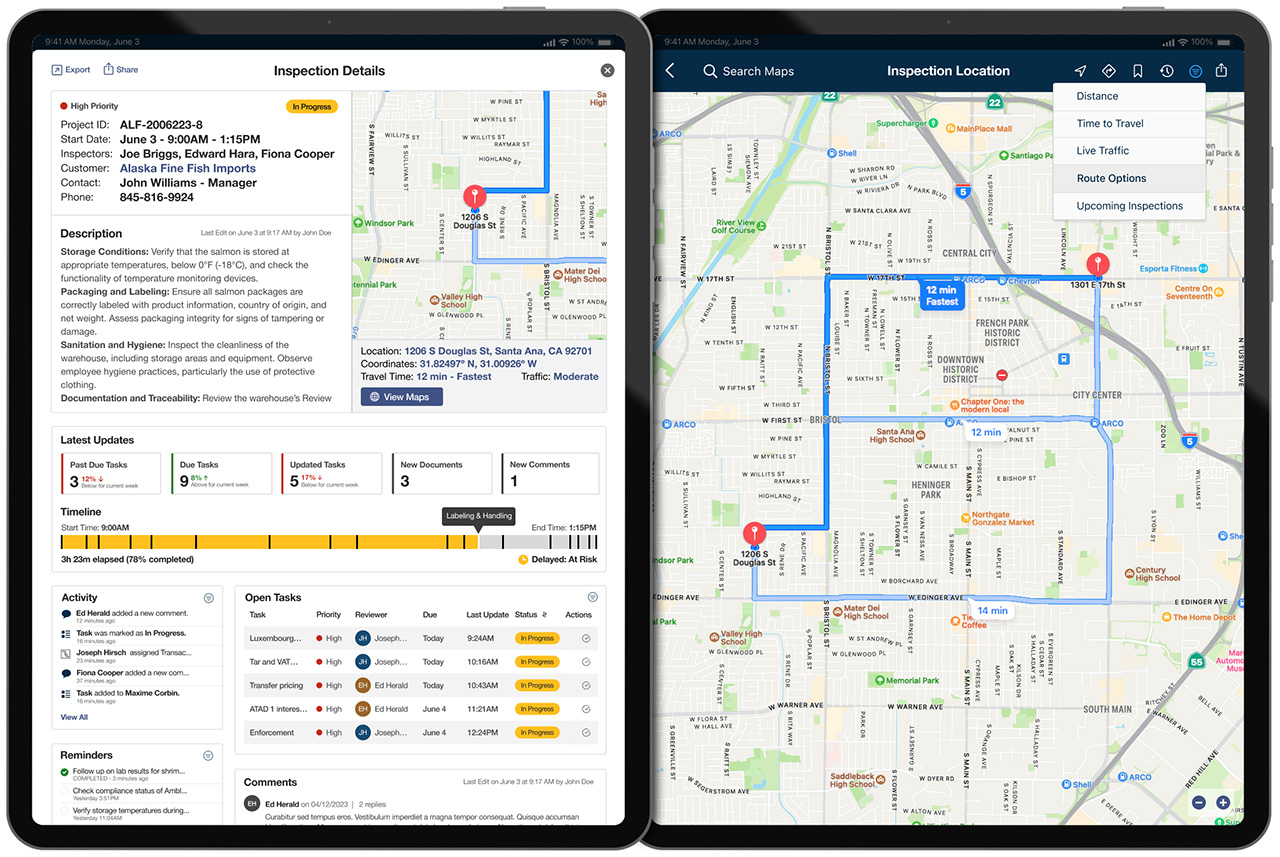
Inspection Forms
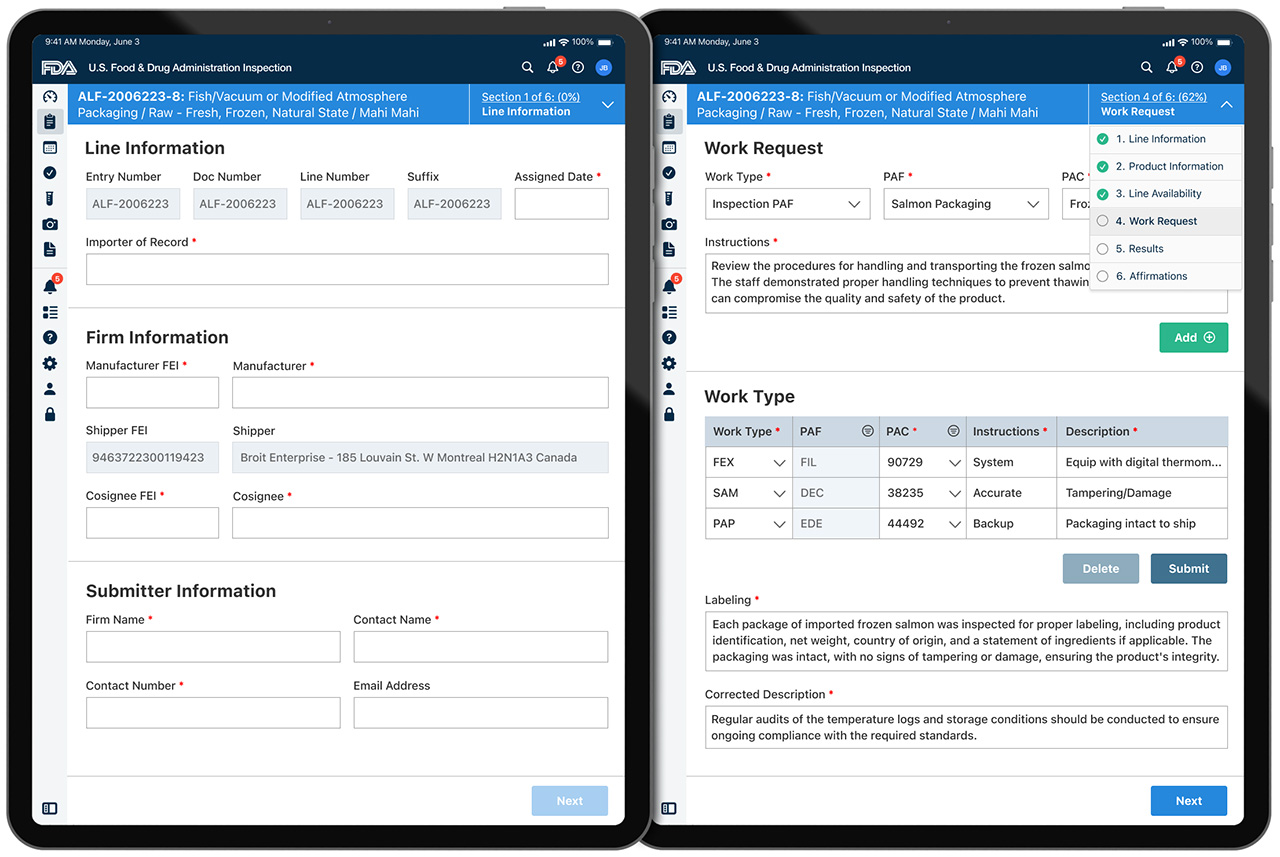
Inspection Sample Collection & Labels

Inspection Visual Documentation Library

InspectionVisual Documentation - Markup
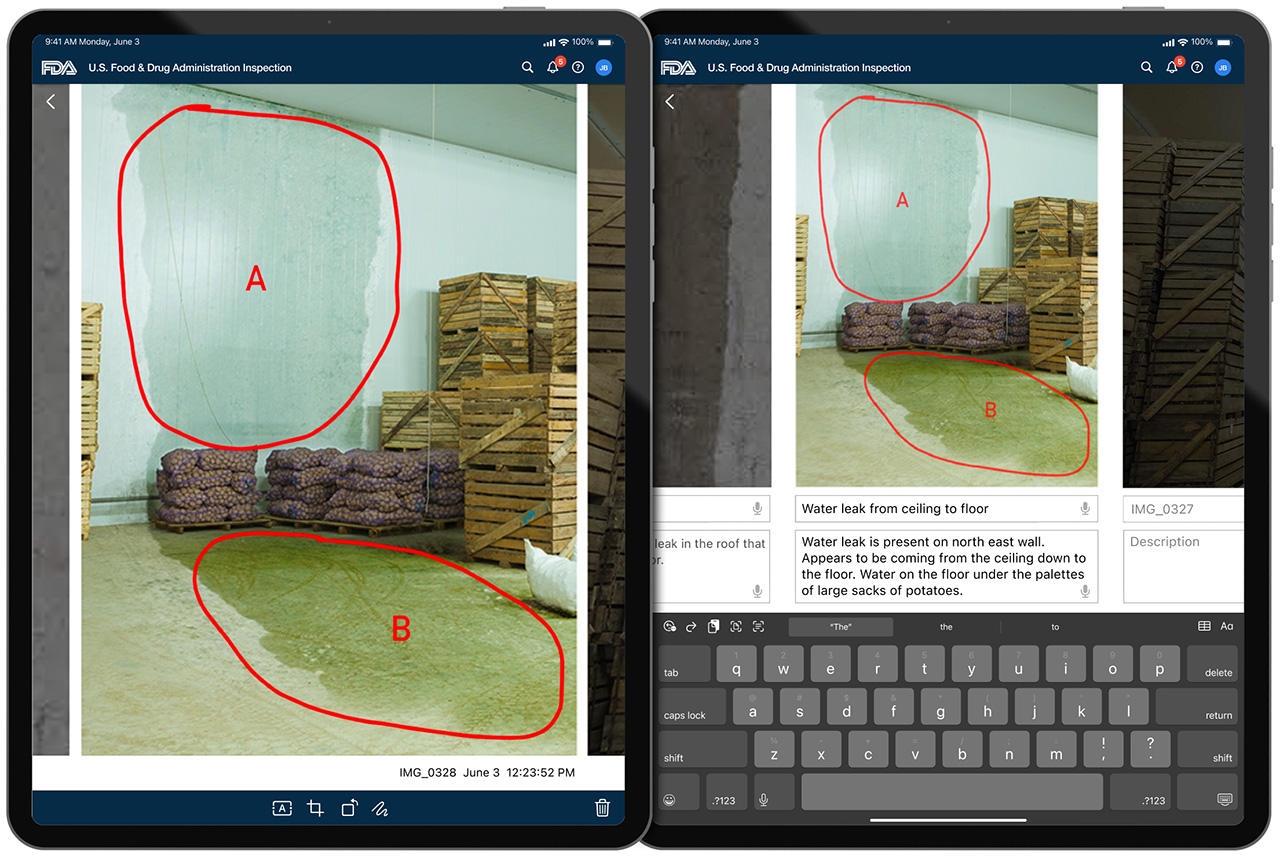
Inspection Reports

